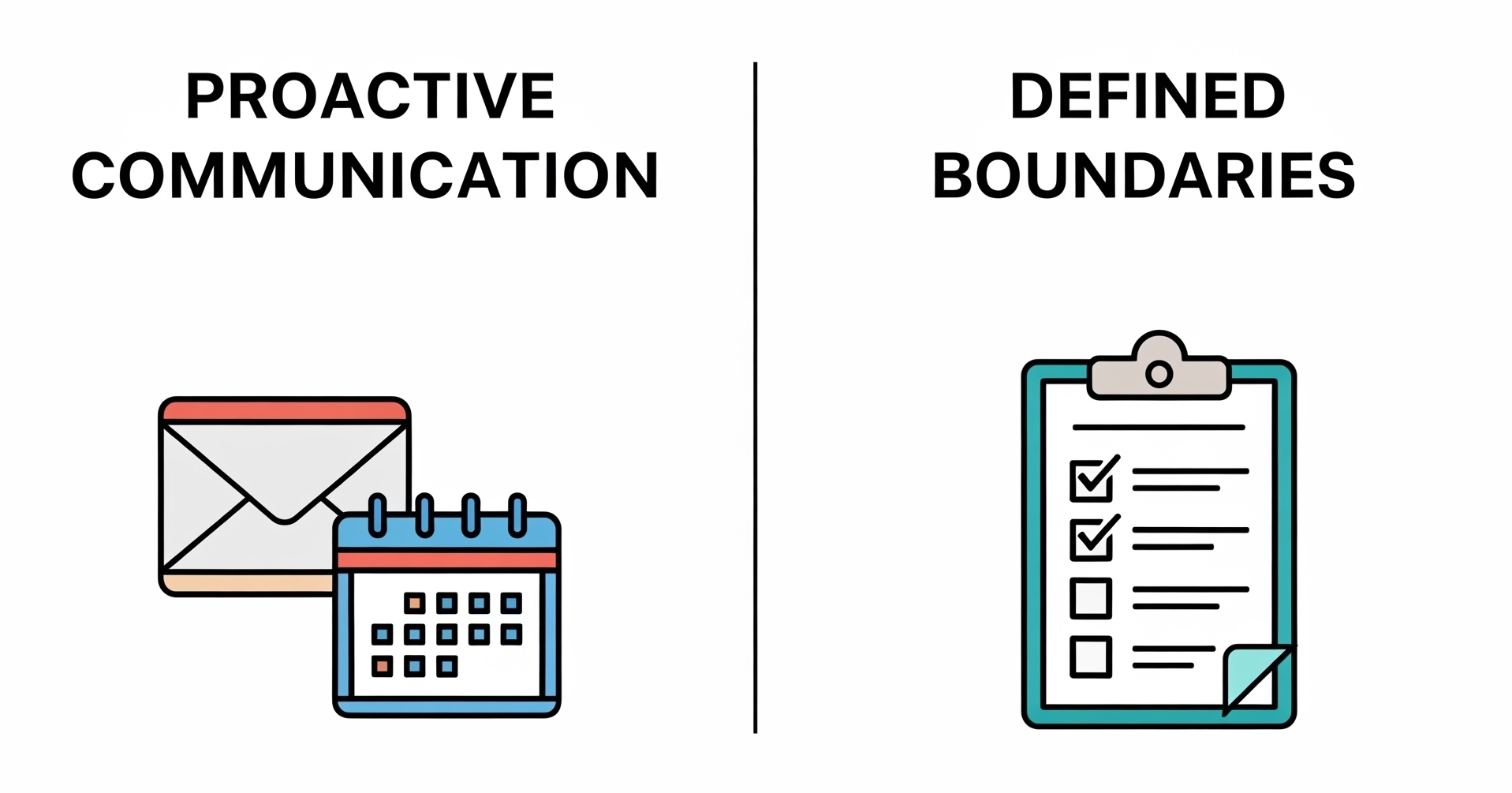Managing Client Expectations: A Framework for Smooth Freelance Projects
Published on: by: Chip Olson
As a freelancer, your work is not the only deliverable you provide. Delivering a professional, predictable, and clear experience is the other, equally important half of your service. The success of a project is rarely determined by a single moment of brilliance, but by the quality of your process.
Early in my career, I thought the way to impress a client was with a dramatic "ta-da!" moment. I landed a website redesign project and, after the initial kickoff call, I went silent for two weeks. I was working tirelessly, building what I thought was the perfect site, planning a big reveal that would showcase my talent.
When I finally unveiled it, I expected applause. Instead, I was met with a tense silence, followed by a long list of fundamental issues. The client, left completely in the dark, had grown anxious. Their own ideas about the project had shifted in the absence of communication, and my "perfect" site was no longer aligned with their vision. My big reveal was a failure, not because the work was bad, but because my process was.
I learned a critical lesson that day: Clients do not want surprises. They want predictability.
Managing client expectations is not a "soft skill"; it is an active project management discipline. The goal is simple: no surprises. This framework will show you how to achieve that.
The Framework: Proactive Communication and Defined Boundaries
Your ability to manage expectations rests on two pillars: a consistent communication cadence and clearly documented boundaries.

Component 1: The Communication Cadence
You must establish a reliable rhythm for communication. This prevents the client from ever needing to ask, "What's the status?"
-
The Weekly Status Update: At the end of every week (e.g., Friday afternoon), send a concise summary email. It does not need to be long. It must contain these three sections:
- What we accomplished this week.
- What we plan to accomplish next week.
- Any questions or blockers. (e.g., "I am waiting on the final copy for the About page to proceed.")
This single email builds immense trust and eliminates client anxiety.
-
Consolidate Feedback: Train your clients to provide feedback in consolidated batches. A stream of consciousness over ten separate emails is inefficient and leads to mistakes. Politely guide them: "This is great feedback. Please take a day to gather any other thoughts, and send them over in one consolidated list for our first round of revisions."
Component 2: Document Everything (Your Project Hub)
Verbal agreements and memory are unreliable. A central source of truth is required for every project.
-
Use a Project Hub: Whether it's a dedicated project management tool like Trello or Asana, or even just a well-organized Google Drive folder, there must be one place for all project-related documents.
-
Summarize Every Call: After every meeting or phone call where decisions are made, send a brief follow-up email summarizing what was agreed upon. Start with, "To recap our conversation..." This creates a written record and confirms alignment.
A Note on Your Time: This administrative work — summarizing calls, organizing files, and updating project boards — is essential, professional, and non-billable. This is precisely why it is critical to accurately calculate your hourly rate. The hours spent on documentation and communication are part of the 'cost of doing business' that must be covered by your billable work. When you account for this non-billable time, you ensure that your rate is truly sustainable.
Component 3: Managing Scope and Revisions
This is the most common area for mismatched expectations. Your contract sets the rules; your communication enforces them professionally.
-
Handling Out-of-Scope Requests: When a client asks for something new, do not just say "no" or, even worse, "yes" without a plan. Use this script:
"That's a great idea. It falls outside our current scope, so I can scope it out as a separate Phase 2 for you. Would you like a proposal for that?"
This reframes the request professionally and turns potential scope creep into an upsell opportunity.
-
Clarifying Revision Rounds: When a client submits their "first round of revisions," confirm it with them before starting the work:
"Thank you for this feedback. Just to confirm, is this the complete list for Round 1 of our two included revision rounds?"
This prevents a single round from turning into a dozen small changes.

Handling Problems Before They Escalate
Bad news does not get better with time. If you are facing a delay or a technical issue, inform the client immediately and proactively.
- Wrong way: "Sorry this is late, I ran into an issue."
- Right way: "A quick heads-up: I've encountered an unexpected issue with X that will add about a day to the timeline for this milestone. To mitigate this, I have already started on Y. I will have the completed work to you by end of day Wednesday instead of Tuesday. Please let me know if this new timeline causes any issues on your end."
This proactive communication demonstrates responsibility and builds trust even when problems arise.
Conclusion: You Are a Project Partner, Not an Order-Taker
Delivering great work is the baseline. What elevates a freelancer to a trusted professional partner is their process. A predictable process turns a client from an anxious spectator into a confident collaborator.
Managing expectations is the system that ensures projects finish on time, on budget, and result in a happy client who will provide repeat business, referrals, and glowing testimonials.
- Chip Olson
